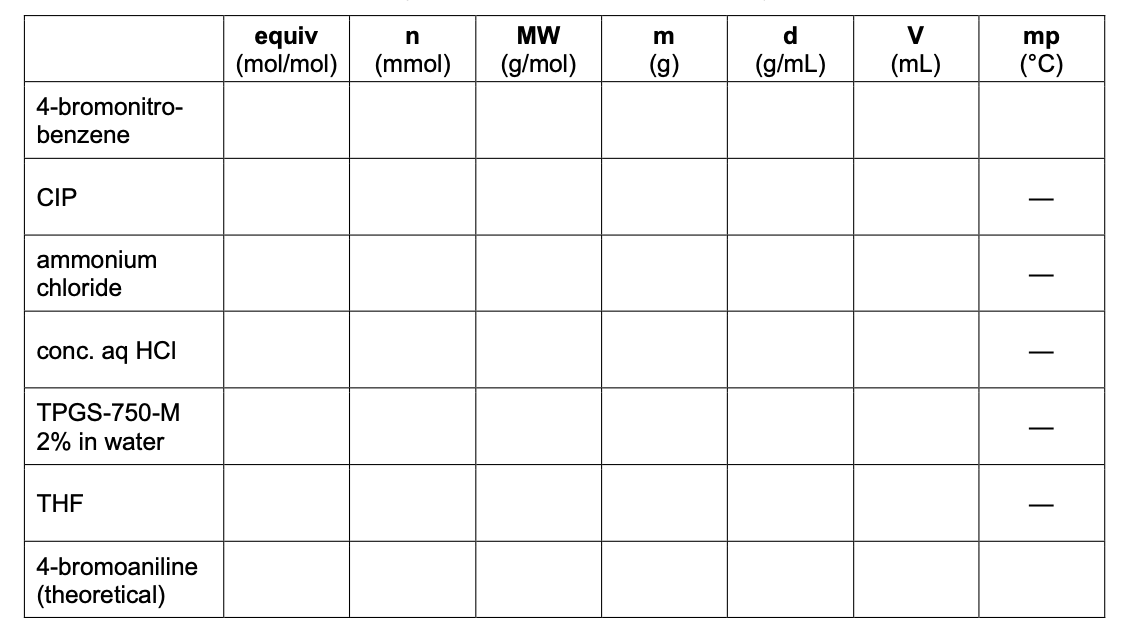complete the table Procedure Preheat the hotplate stirrer with an aluminum block to 45–50 °C (do not exceed 55 °C). To a clean 5-mL conical vial equipped with a Teflon-coated magnetic stir vane, add 4- bromo-nitrobenzene (152 mg, 0.750 mmol, 1 equiv) and THF (150 μL). Cap the vial and stir the mixture at 45–50 °C for about 30 s to partially dissolve the substrate; don’t stir too fast to avoid splashing the contents on the walls of the vial. Add ammonium chloride (120 mg, 2.2 mmol, 3 equiv), carbonyl iron powder (CIP; 210 mg, 3.80 mmol, 5 equiv), the solution of TPGS-750-M (2% in water, 1.5 mL), and 1 drop of concentrated HCl. Cap the vial and place it on the hot plate stirrer, stirring at 45–50 °C. While the reaction mixture is stirring, prepare an approximate 2% solution of the reactant in DCM (1 sample per 3–4 students) by dissolving 10–15 mg of 4-bromo-nitrobenzene in 0.5 mL of methylene chloride. Prepare the solvent mixture for the mobile phase (25% ethyl acetate–hexanes, v/v). Obtain TLC.
complete the table
Procedure
-
Preheat the hotplate stirrer with an aluminum block to 45–50 °C (do not exceed 55 °C).
-
To a clean 5-mL conical vial equipped with a Teflon-coated magnetic stir vane, add 4- bromo-nitrobenzene (152 mg, 0.750 mmol, 1 equiv) and THF (150 μL). Cap the vial and stir the mixture at 45–50 °C for about 30 s to partially dissolve the substrate; don’t stir too
fast to avoid splashing the contents on the walls of the vial.
-
Add ammonium chloride (120 mg, 2.2 mmol, 3 equiv), carbonyl iron powder (CIP; 210 mg,
3.80 mmol, 5 equiv), the solution of TPGS-750-M (2% in water, 1.5 mL), and 1 drop of
concentrated HCl. Cap the vial and place it on the hot plate stirrer, stirring at 45–50 °C.
-
While the reaction mixture is stirring, prepare an approximate 2% solution of the reactant in DCM (1 sample per 3–4 students) by dissolving 10–15 mg of 4-bromo-nitrobenzene in 0.5 mL of methylene chloride. Prepare the solvent mixture for the mobile phase (25% ethyl
acetate–hexanes, v/v).
-
Obtain TLC.

Trending now
This is a popular solution!
Step by step
Solved in 4 steps with 3 images






